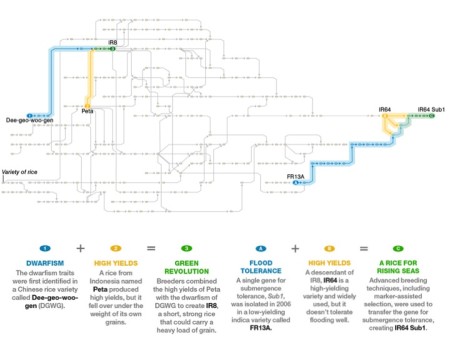It is always fun seeing what other people do with a story you’re reasonably familiar with. So it was listening to The Chocolate Curse, a recent episode of Planet Money. ((Yes, you’re quite right, we did Nibble it when it first came out. Ed.))

Long story short: Ecuador’s fabled cacao industry went bust in the 1920s because all the wonderful old trees fell prey to witches’ broom. Along comes a diminutive, independent cacao breeder who, on his 51st cross, produced a diminutive cacao tree that is resistant to witches broom. Alas, the variety, called CCN51, tastes like “rusty nails,” and worse. That’s it in the picture.
We’ve actually been here before: Unintended consequences of cacao breeding. What has changed, according to Planet Money, is that the big chocolate manufacturers have found ways to make use of the less than tasty CCN51 beans. Ecuador has planted it like there’s no tomorrow, and it has spread to lots of other cacao-producing areas too.
Yay!
Two things surprised me about the story, as told by Planet Money.
1. Nobody seemed to think that, having seen their original cacao industry devastated by a disease, a similar thing might possibly happen when more than half of the cacao trees in Ecuador are just one variety.
2. Having seen their original cacao industry wiped out by a disease, nobody made the connection with the fruit Ecuador is even better known for: bananas.
